About This Palak Paratha
Paratha is an unleavened Indian flatbread that has many variations with different stuffings. Parathas are usually named after their stuffings and palak means spinach in Hindi language so this dish is called “palak paratha”. This spinach paratha has a beautiful vibrant green color and is a fantastic healthy alternative that includes healthy greens. It is especially good for children who do not like spinach. Parathas are a popular breakfast choice in Northern India amongst Punjabi families. In Punjab, a lot of ghee is used to fry the parathas to make them crispy brown but you can also use oil to fry them as I do. These parathas are a little crisp as we fried them with extra oil. For a less crispy paratha use less oil. When making parathas, it’s better to follow the rolling and folding technique. While you roll the dough, apply oil or ghee and fold. By doing this you get layered parathas with a soft texture inside. For this recipe, we made square-shaped parathas. You can also make triangular parathas as I did in this plain Paratha recipe. Palak paratha can be eaten with lemon pickle, mango pickle, curd, or white butter and it is great during winters or monsoons with a cup of hot ginger tea. Another great thing about parathas are that they keep really well and can be added to lunch boxes and taken on one-day journeys.
How to make Palak Paratha
Making Palak Puree
- Rinse 200 to 250 grams of spinach leaves very well with water and then drain them. If possible use organic spinach or grow your own spinach. If buying spinach from outside make sure to soak them in a mix of water, vinegar and baking soda for 4 to 5 minutes. This removes some of the pesticides from the spinach leaves. Then rinse them again thoroughly with fresh water a few times. Drain all the water and set aside.
- Heat some water in a pan until it boils. Remove the pan from the stove top and keep the pan on your work surface. Add the spinach leaves and blanch them for 5 to 6 minutes. If you want you can strain and reserve some of the water that was used to blanch the spinach.
- Add the blanched spinach leaves to the blender.
- Make a smooth puree without adding any water.
Kneading Dough
- Add 2 cups of whole wheat flour, ¼ teaspoon carom seeds (ajwain), 1-2 finely chopped green chilies (if using), 1 pinch of asafoetida (hing), and salt as required to a large bowl. Mix the ingredients together well.
- Then add the spinach puree and 2 teaspoon oil to the dry ingredients and mix well with a spoon.
- Add the required amount of the blanched stock or water. Add water in smaller portions and continue to knead.
- Knead into a smooth and soft dough.
Rolling Palak Paratha
- Make a medium size ball from the dough.
- Roll the dough ball into a small circle and sprinkle some flour on top while rolling the dough ball.
- Spread some oil or ghee on the top of the rolled dough. I have used ghee.
- Fold from both sides.
- Apply the oil or ghee to the folded side.
- Fold again on the other sides to make a folded square shape.
- Roll into a medium-sized paratha.
Cooking Palak Paratha
- Place the palak ka paratha on a hot tava or skillet.
- Once you see some air pockets on the paratha and its ¼th cooked, then flip it.
- Drizzle some oil or ghee on the top side. I used ghee (clarified butter) to roast the paratha.
- When the second side is half cooked then flip again.
- Again apply some oil or ghee on the top side (or second side).
- Press the paratha edges with the spatula or back of a spoon so that the paratha cooks evenly from all sides. You can flip a couple of times for even cooking.
- Cook palak paratha till they are crisp and brown on both sides. Make all the parathas this way. Before making the second paratha wipe the tava (skillet) with a kitchen napkin if there is any excess or extra whole wheat flour on it.
- Serve the palak paratha hot with yogurt or pickle. We usually have them with Mango Pickle or lemon pickle. You can also stack the palak parathas in a roti basket or casserole and serve them warm later. They can also be packed in lunch boxes or eaten for lunch, dinner, or as an evening snack with a cup of tea.
Expert Tips for Best Palak Paratha
Cooking parathas: It is very important to roast the parathas on medium to high heat to achieve the best results. If you roast them on low heat they will become chewy and hard and if the heat is too high then the parathas will burn. Kneading: Make sure that the paratha dough is soft and smooth once you have finished kneading it. The dough should be relatively moist so if it is on the dry side then add a splash of water and knead it until you get the desired texture. Conversely, if the dough is too wet and sticky then add some wheat flour. Veggies: Feel free to add any pureed or grated veggies of your choice to this dish. For example, you can add mixed veggies, carrots, or pumpkins. Lunch box: If you want to add parathas to your lunch box then wrap them in foil tightly while they are still hot. You can also include mango pickle or lemon pickle as an accompaniment. Scaling: This recipe can be doubled or tripled if you need to feed a crowd.
Please be sure to rate the recipe in the recipe card or leave a comment below if you have made it. For more vegetarian inspirations, Sign Up for my emails or follow me on Instagram, Youtube, Facebook, Pinterest or Twitter. Aloo Paratha Recipe (Homemade Punjabi Style) Gobi Paratha (Cauliflower Stuffed Flatbread) Mix Veg Paratha | Healthy Vegetable Paratha Healthy Methi Paratha | Punjabi Methi ke Parathe This Palak Paratha Recipe is from the blog archives (June 2013) has been republished and updated on 30 May 2021.
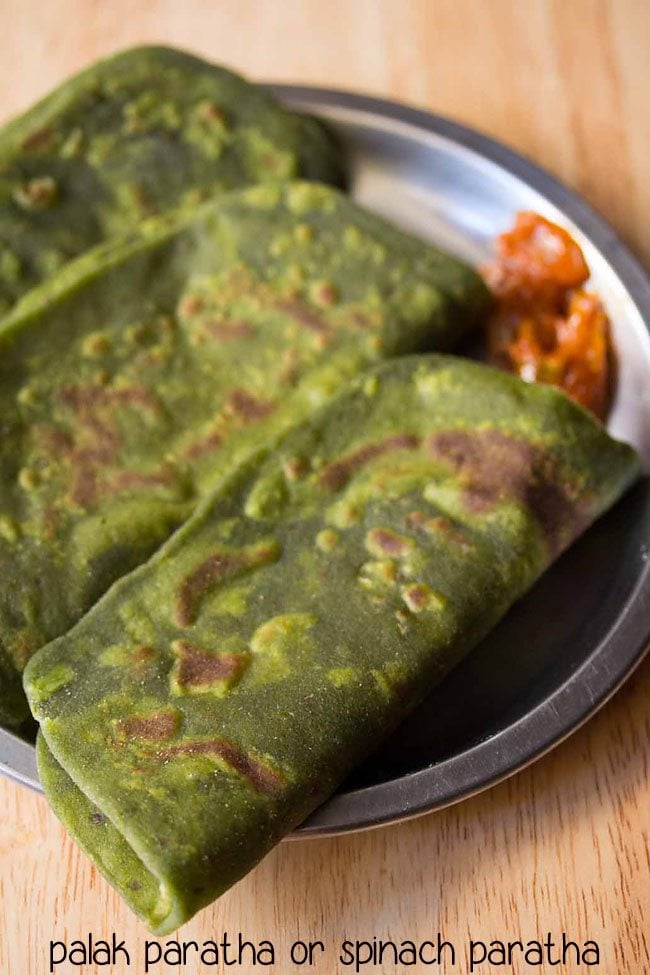
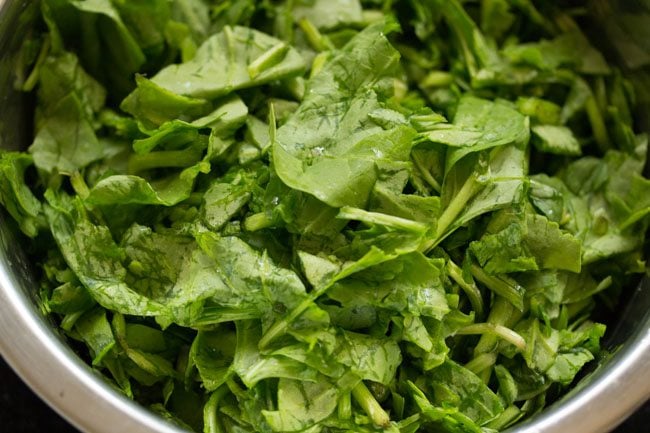
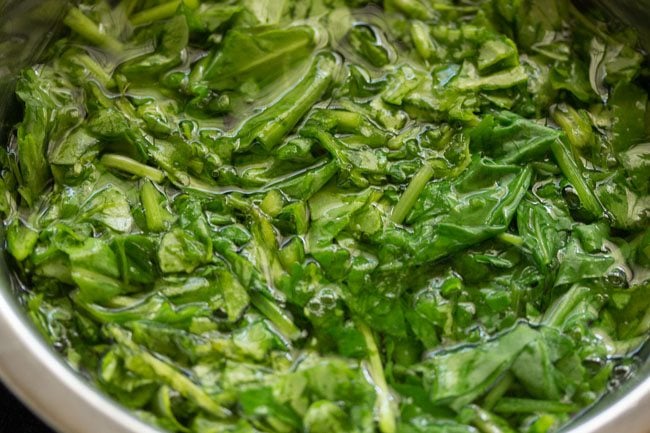
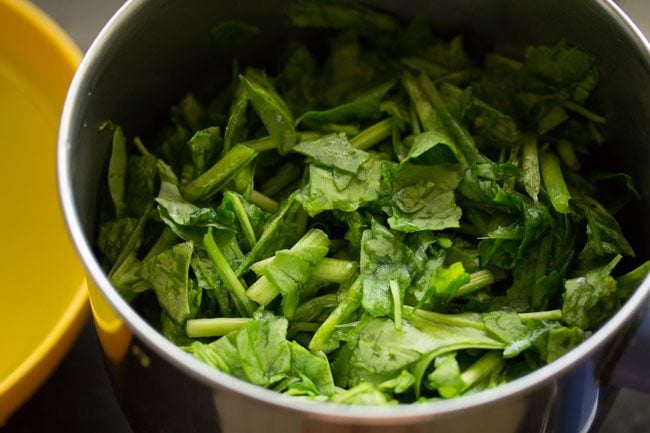
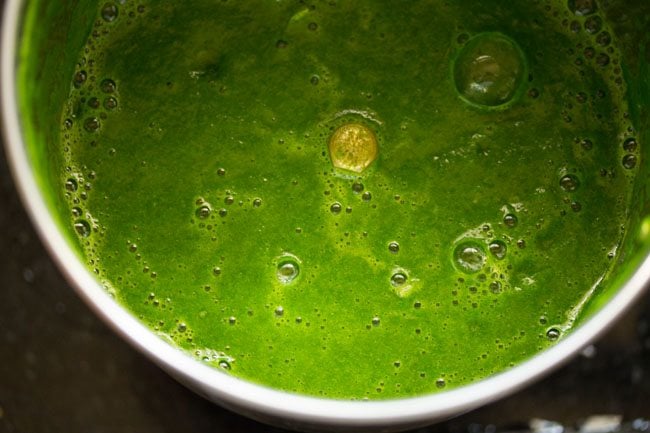
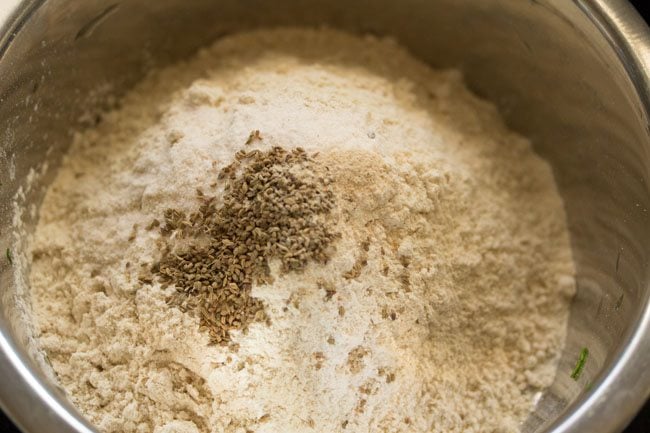
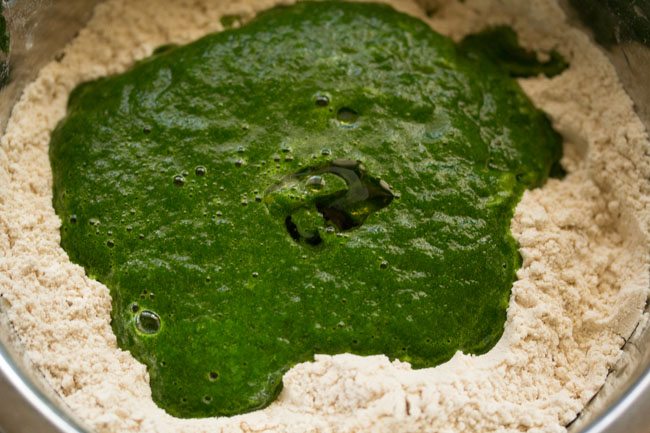
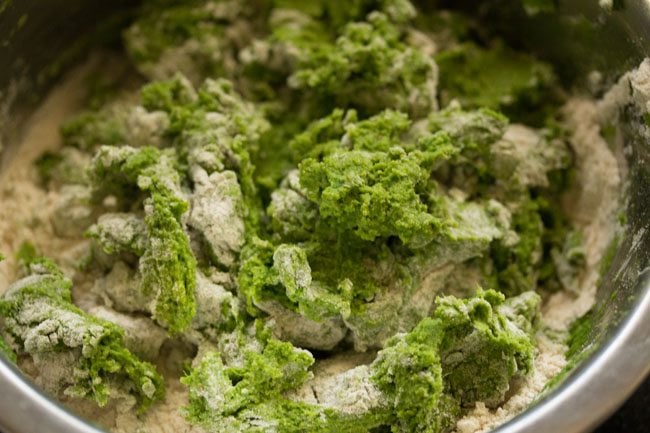
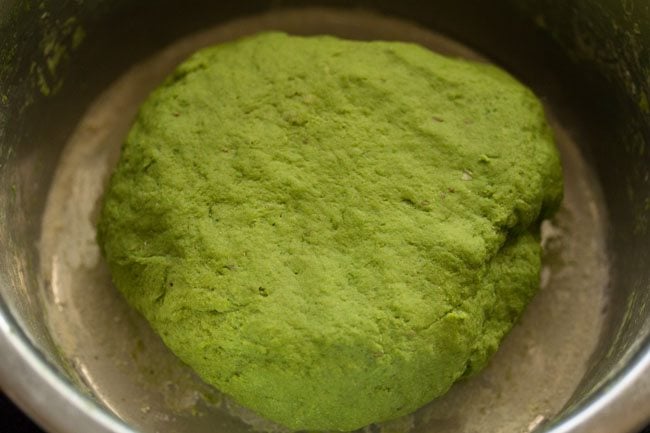
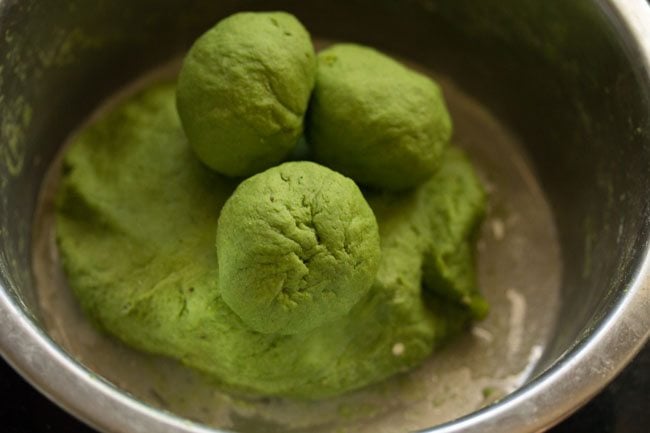
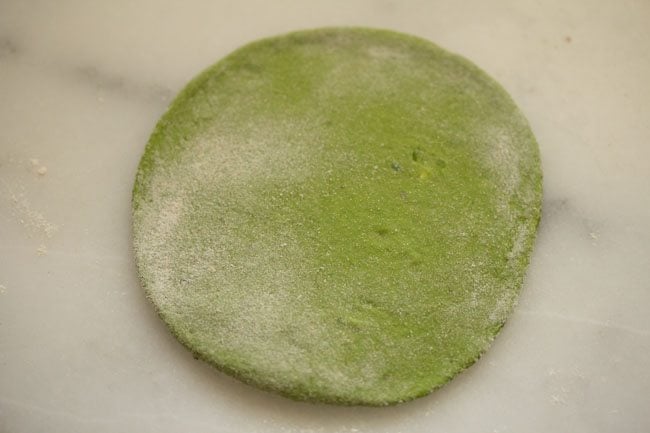
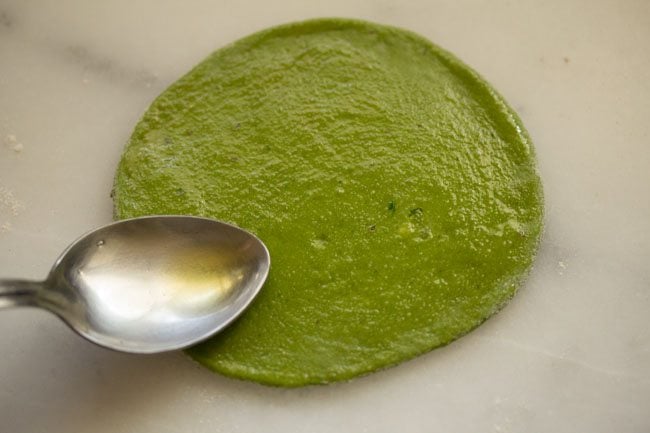
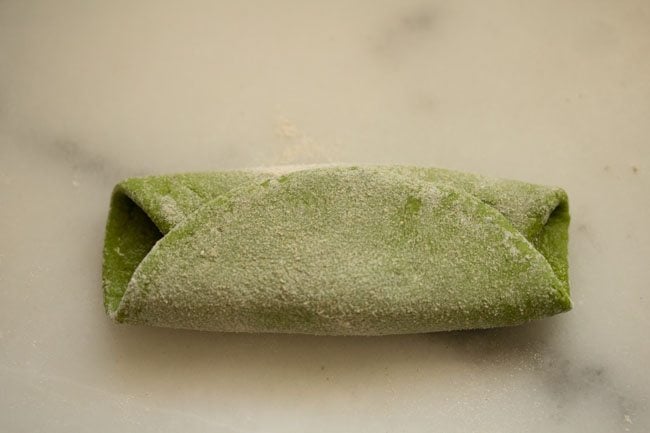
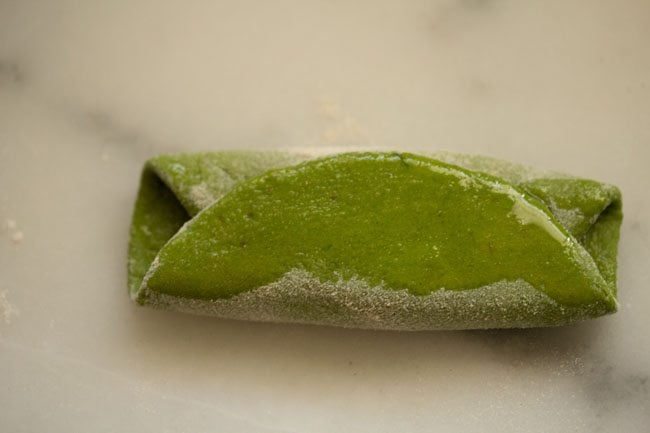
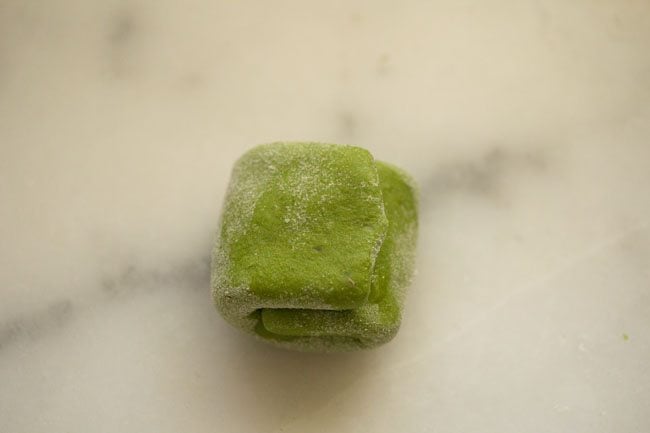
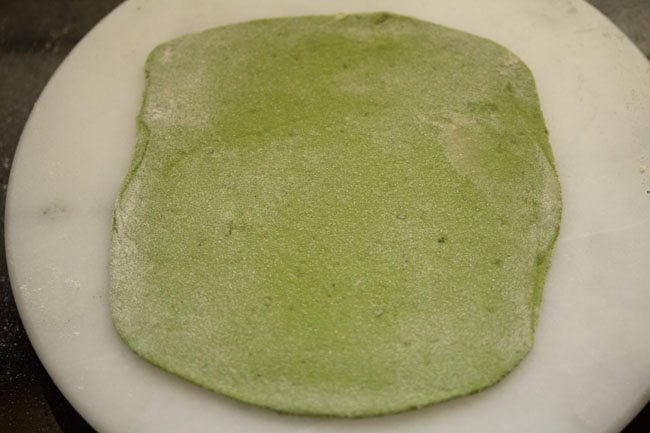
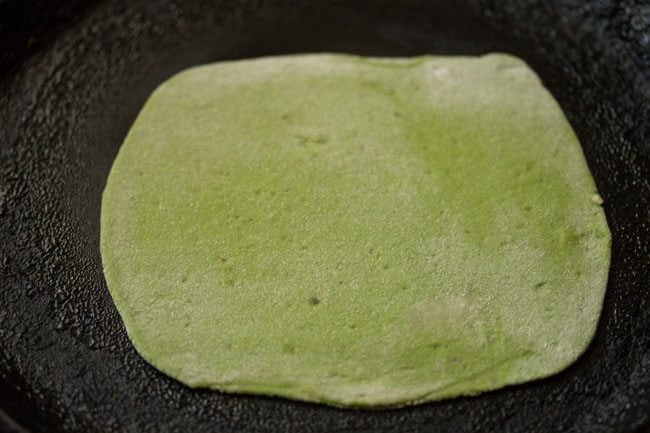
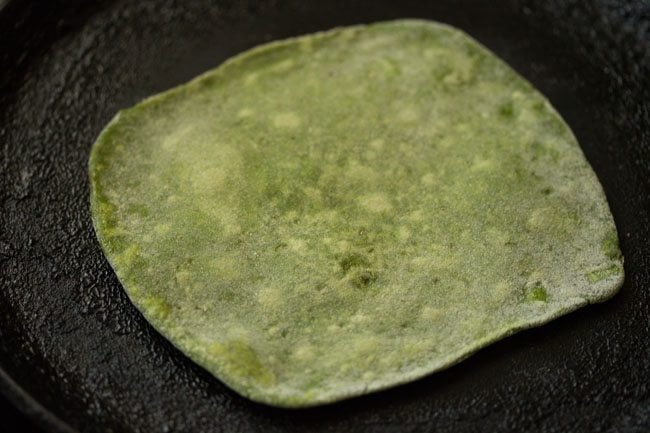
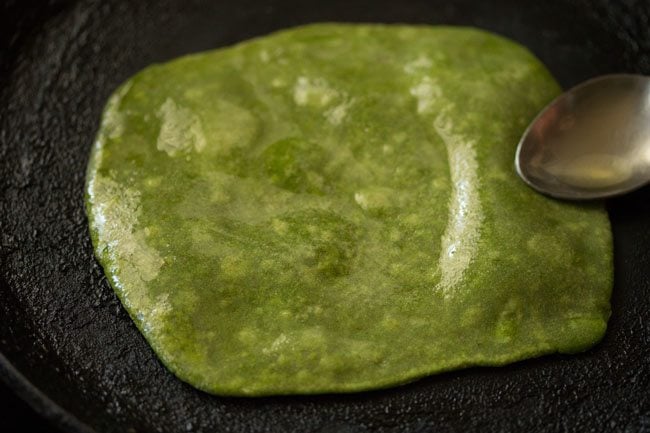
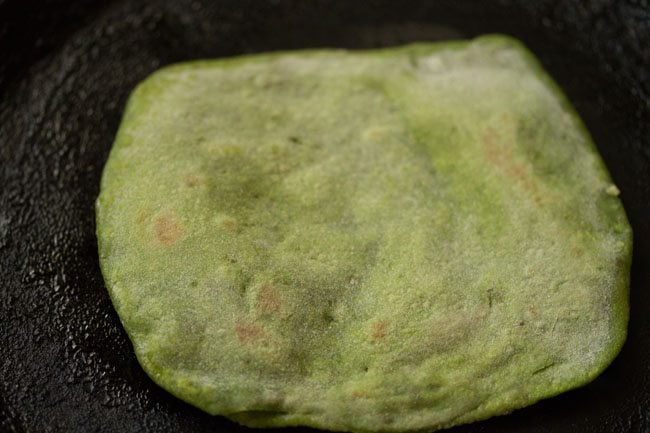
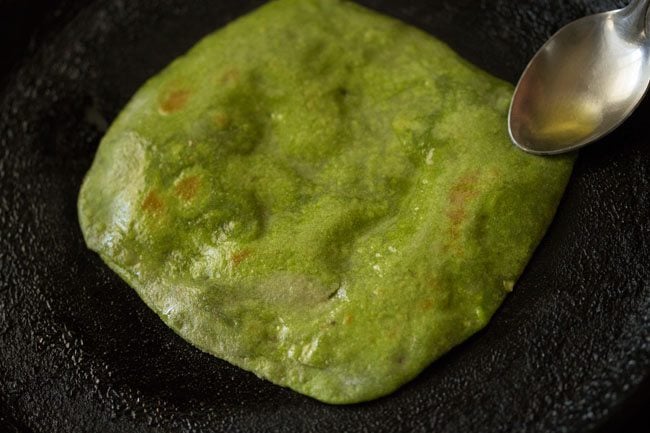
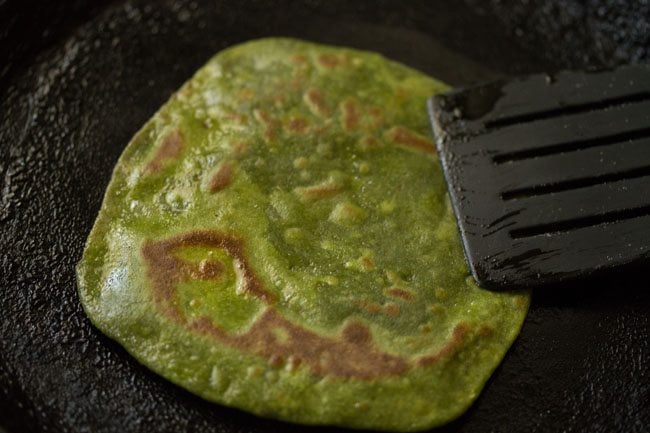
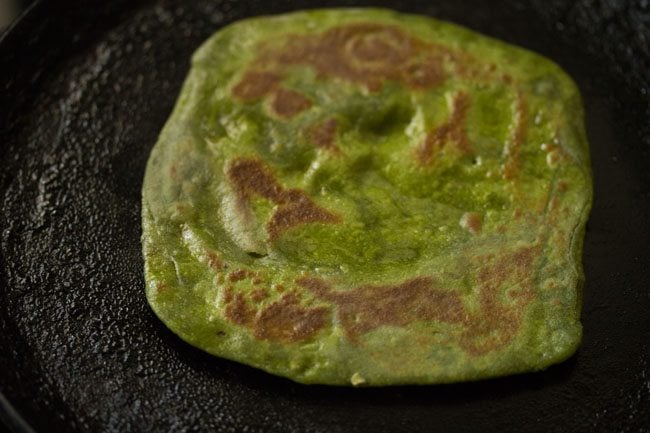
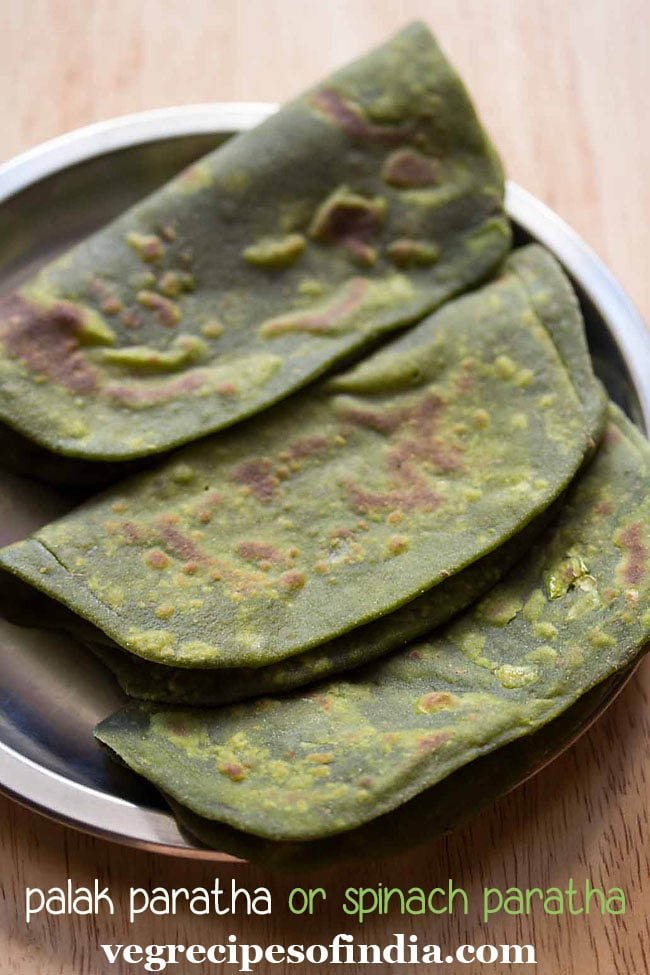
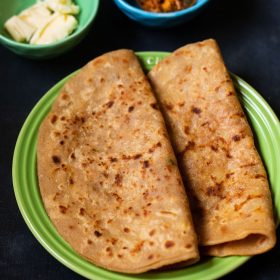
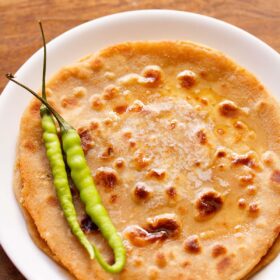
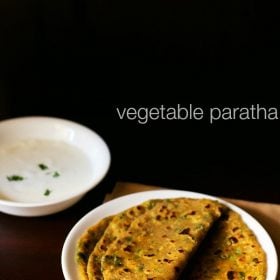
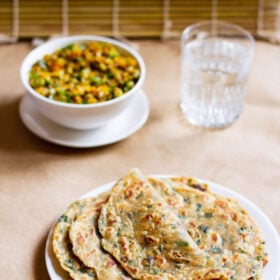
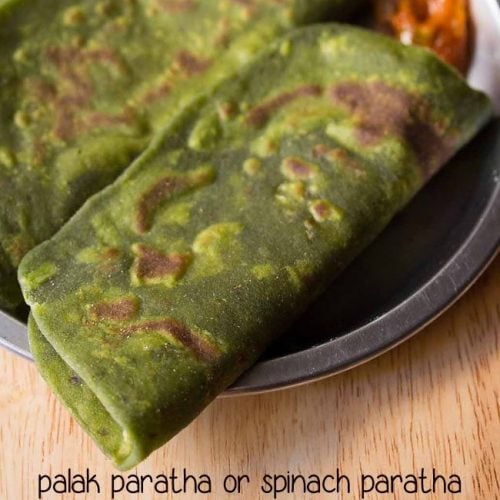
title: “Palak Paratha Healthy Palak Ka Paratha Recipe " ShowToc: true date: “2024-10-02” author: “Thomas Rodriquez”
About This Palak Paratha
Paratha is an unleavened Indian flatbread that has many variations with different stuffings. Parathas are usually named after their stuffings and palak means spinach in Hindi language so this dish is called “palak paratha”. This spinach paratha has a beautiful vibrant green color and is a fantastic healthy alternative that includes healthy greens. It is especially good for children who do not like spinach. Parathas are a popular breakfast choice in Northern India amongst Punjabi families. In Punjab, a lot of ghee is used to fry the parathas to make them crispy brown but you can also use oil to fry them as I do. These parathas are a little crisp as we fried them with extra oil. For a less crispy paratha use less oil. When making parathas, it’s better to follow the rolling and folding technique. While you roll the dough, apply oil or ghee and fold. By doing this you get layered parathas with a soft texture inside. For this recipe, we made square-shaped parathas. You can also make triangular parathas as I did in this plain Paratha recipe. Palak paratha can be eaten with lemon pickle, mango pickle, curd, or white butter and it is great during winters or monsoons with a cup of hot ginger tea. Another great thing about parathas are that they keep really well and can be added to lunch boxes and taken on one-day journeys.
How to make Palak Paratha
Making Palak Puree
- Rinse 200 to 250 grams of spinach leaves very well with water and then drain them. If possible use organic spinach or grow your own spinach. If buying spinach from outside make sure to soak them in a mix of water, vinegar and baking soda for 4 to 5 minutes. This removes some of the pesticides from the spinach leaves. Then rinse them again thoroughly with fresh water a few times. Drain all the water and set aside.
- Heat some water in a pan until it boils. Remove the pan from the stove top and keep the pan on your work surface. Add the spinach leaves and blanch them for 5 to 6 minutes. If you want you can strain and reserve some of the water that was used to blanch the spinach.
- Add the blanched spinach leaves to the blender.
- Make a smooth puree without adding any water.
Kneading Dough
- Add 2 cups of whole wheat flour, ¼ teaspoon carom seeds (ajwain), 1-2 finely chopped green chilies (if using), 1 pinch of asafoetida (hing), and salt as required to a large bowl. Mix the ingredients together well.
- Then add the spinach puree and 2 teaspoon oil to the dry ingredients and mix well with a spoon.
- Add the required amount of the blanched stock or water. Add water in smaller portions and continue to knead.
- Knead into a smooth and soft dough.
Rolling Palak Paratha
- Make a medium size ball from the dough.
- Roll the dough ball into a small circle and sprinkle some flour on top while rolling the dough ball.
- Spread some oil or ghee on the top of the rolled dough. I have used ghee.
- Fold from both sides.
- Apply the oil or ghee to the folded side.
- Fold again on the other sides to make a folded square shape.
- Roll into a medium-sized paratha.
Cooking Palak Paratha
- Place the palak ka paratha on a hot tava or skillet.
- Once you see some air pockets on the paratha and its ¼th cooked, then flip it.
- Drizzle some oil or ghee on the top side. I used ghee (clarified butter) to roast the paratha.
- When the second side is half cooked then flip again.
- Again apply some oil or ghee on the top side (or second side).
- Press the paratha edges with the spatula or back of a spoon so that the paratha cooks evenly from all sides. You can flip a couple of times for even cooking.
- Cook palak paratha till they are crisp and brown on both sides. Make all the parathas this way. Before making the second paratha wipe the tava (skillet) with a kitchen napkin if there is any excess or extra whole wheat flour on it.
- Serve the palak paratha hot with yogurt or pickle. We usually have them with Mango Pickle or lemon pickle. You can also stack the palak parathas in a roti basket or casserole and serve them warm later. They can also be packed in lunch boxes or eaten for lunch, dinner, or as an evening snack with a cup of tea.
Expert Tips for Best Palak Paratha
Cooking parathas: It is very important to roast the parathas on medium to high heat to achieve the best results. If you roast them on low heat they will become chewy and hard and if the heat is too high then the parathas will burn. Kneading: Make sure that the paratha dough is soft and smooth once you have finished kneading it. The dough should be relatively moist so if it is on the dry side then add a splash of water and knead it until you get the desired texture. Conversely, if the dough is too wet and sticky then add some wheat flour. Veggies: Feel free to add any pureed or grated veggies of your choice to this dish. For example, you can add mixed veggies, carrots, or pumpkins. Lunch box: If you want to add parathas to your lunch box then wrap them in foil tightly while they are still hot. You can also include mango pickle or lemon pickle as an accompaniment. Scaling: This recipe can be doubled or tripled if you need to feed a crowd.
Please be sure to rate the recipe in the recipe card or leave a comment below if you have made it. For more vegetarian inspirations, Sign Up for my emails or follow me on Instagram, Youtube, Facebook, Pinterest or Twitter. Aloo Paratha Recipe (Homemade Punjabi Style) Gobi Paratha (Cauliflower Stuffed Flatbread) Mix Veg Paratha | Healthy Vegetable Paratha Healthy Methi Paratha | Punjabi Methi ke Parathe This Palak Paratha Recipe is from the blog archives (June 2013) has been republished and updated on 30 May 2021.




























